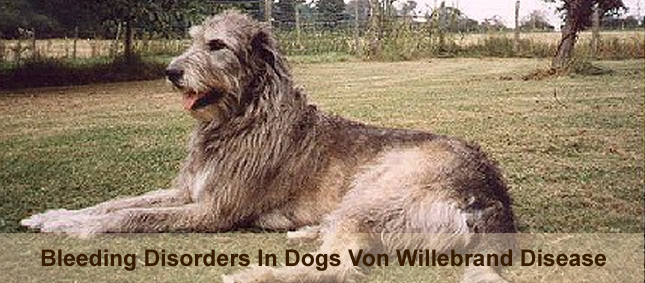Bleeding Disorders In Dogs Von Willebrand Disease
Von Willebrand disease is a clotting disorder seen in well over 50 breeds of dogs with the Doberman Pinscher being the most common. Other breeds at risk of Von Willebrand Disease include but are not limited to Shetland Sheepdogs, Airedale Terriers, Pembroke Welsh Corgi, Golden Retriever, Miniature Schnauzer, Standard Poodle, Scottish Terriers and the Chesapeake Bay Retriever.
Most clotting disorders in dogs occur because of the absence of a coagulation factor that is needed to make the blood clot. Dogs affected with Von Willebrand disease lack a protein named the von Willebrand factor or vWF for short, which causes the blood to have problems clotting. The disease is divided into three groups. Type I refers to a mildly low vWF and is commonly seen in Dobermans. Type II means a moderately low vWF and is not commonly seen. Type III describes a severe deficiency of vWF, and heavy bleeding will normally occur.
 In most cases bleeding issues associated with Von Willebrand disease are present from birth, and symptoms aremild and often tend to lessen as the dog gets older. Signs of the disease may be seen accidentally , such as a toenail that has been clipped too far and will not stop bleeding, wounds or injuries that are slow to heal, excessive bleeding from teething, nosebleeds, or hemorrhage during and after surgical procedures.
In most cases bleeding issues associated with Von Willebrand disease are present from birth, and symptoms aremild and often tend to lessen as the dog gets older. Signs of the disease may be seen accidentally , such as a toenail that has been clipped too far and will not stop bleeding, wounds or injuries that are slow to heal, excessive bleeding from teething, nosebleeds, or hemorrhage during and after surgical procedures.
An owner that suspects that their dog may have a bleeding disorder should contact their veterinarian and discuss the signs and symptoms in their dog. A veterinarian will take a blood sample for analysis to test a dog for Von Willebranddisease. A complete blood count to check for anemia and verify platelet count is also normally performed. Since Breeding Von Willebrand Disease is considered an inherited disease, breeding with dogs that have a positive diagnosis should be avoided.
Drugs such as aspirin, tranquilizers and anti-inflammatories should be avoided in dogs suffering from a bleeding disorder as they interfere with platelet function and can cause serious complications. Surgery in dogs with severe bleeding disordersshould be avoided unless absolutely necessary, and special precautions should be taken if a surgical route is taken.






